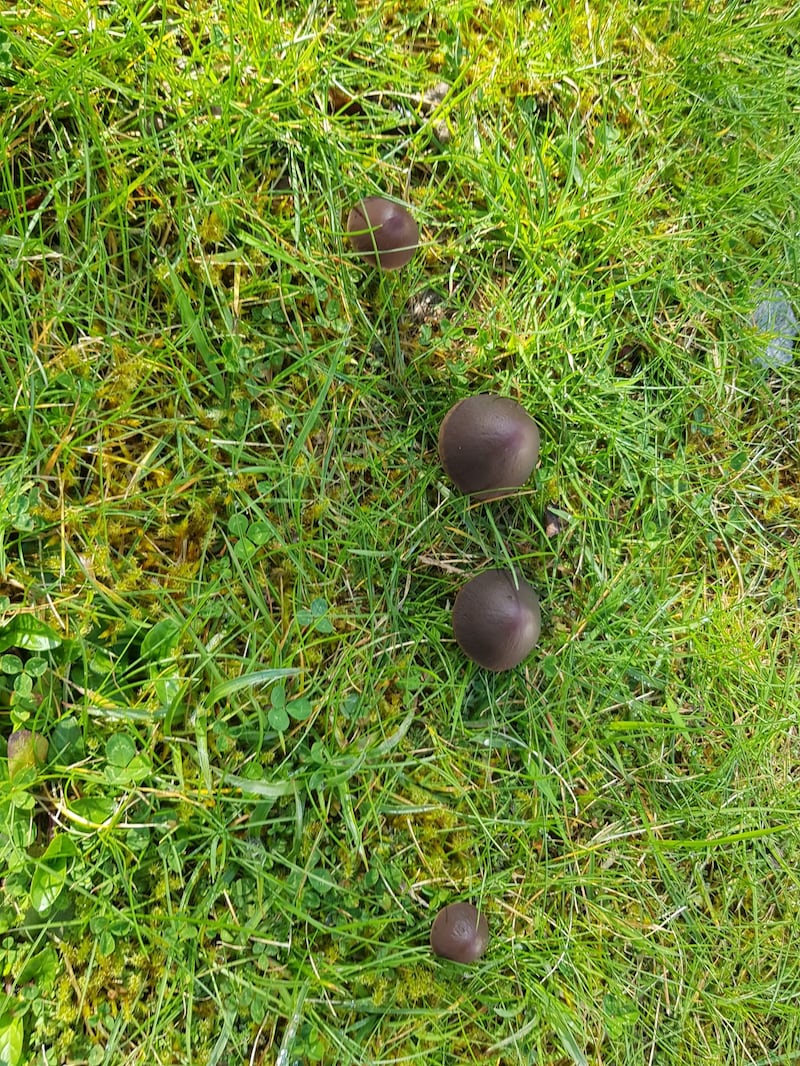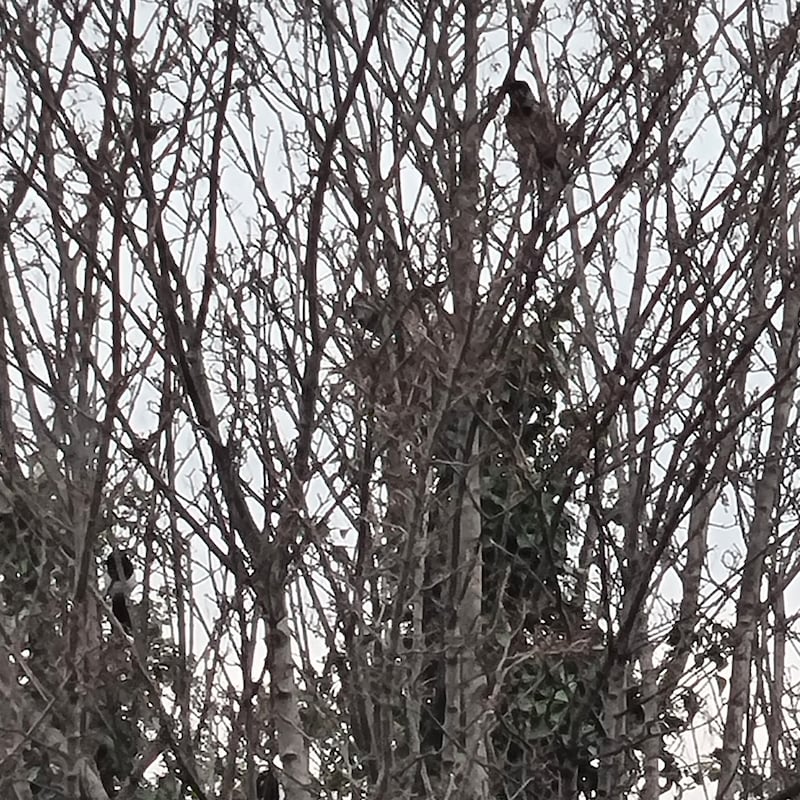I came across this unusual item on the beach just after high tide. There were lots of them there, all about the size of a hand. Declan Mulvey, Co Dublin.
They are the egg cases of the large necklace shell, Euspira catena, one of the moon snails.

We found these black toadstools in the back garden. Whatever are they? Giles Lee, Dublin
These are the fruiting bodies of Panaeolus fimicola, which is common in lawns and pasture. The spores inside the gills underneath ripen unevenly, which causes the gills to have a mottled appearance – hence its English name mottlegill. It grows here because the soil in your lawn is rich in nutrients.

We came across this dead dolphin washed up on Rocky Bay beach in Cork. The large serrated injuries to the belly and head look to be bites. Is it common for dolphins to suffer such a fate in Irish waters? David D’Arcy, Co Cork
These injuries did not happen at sea or cause the dolphin’s death. Simon Berrow of the Irish Whale and Dolphin Group tells me that they are caused by bird scavengers once stranded. The genital area is often the first for them to access, as are the eyes and blowhole, but if there is a puncture in the side, they will open that up too. In fact, recently he has observed gulls pecking out the eyes of stranded dolphins while still alive! He asked that all strandings, dead or alive, should be reported to the group.

I have a pair of magpies that make their nest every year in my garden and I love watching them build each spring. Two ravens have been hanging about lately and this morning they are in the nest. The magpies are nearby and not happy but aren’t taking on their larger counterparts. Will they take over the nest? I do hope not. Portia Reynolds, Co Dublin
These invaders are hooded crows rather than ravens. Ravens are huge – 64cm – compared with 45cm for a hooded crow, and they don’t frequent Dublin gardens. Hooded crows frequently attack magpie nests and destroy their eggs and chicks, which is a good reason why magpies tend to avoid them at this time of year. As smart and strong as magpies are, a pair of them are no match for a pair of hooded crows, so they will most likely have to give up on this nesting attempt and move elsewhere. The crows may well take over the nest site, though they would need to do quite a bit of renovation to make it match their specifications.

I took this picture of gentians in the Burren on April 16th. None of the other Burren specialities were in flower. Is this early for gentians? John Dwyer, Clonmel, Co Tipperary
This beautiful alpine flower heralds the season for flower watching on the Burren. While the National Biodiversity Centre has received records for January (one), February (one) and March (eight), the main flowering season is April and May. So, they are still there in May when the other Burren rarities all come into bloom.

Here is a picture of a kestrel seen flying at Moneypoint last month. John Glynn, Kilrush, Co Clare
Kestrels are our most common bird of prey and feed on mice and other small rodents. Because they can see in ultraviolet, they are able to detect the presence of mice from the dribbles of urine produced continuously by mice as they scurry about. Such incontinence gives the game away. Feeding on mice that have ingested rodenticides has led to build-up of these poisons in many of our kestrels.
Please submit your nature query, observation, or photo with a location, via irishtimes.com/eyeonnature



















